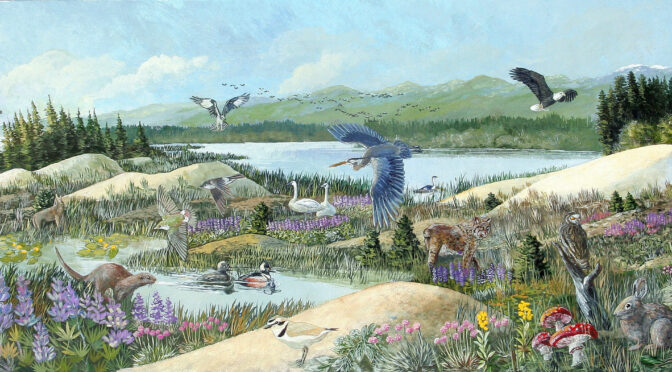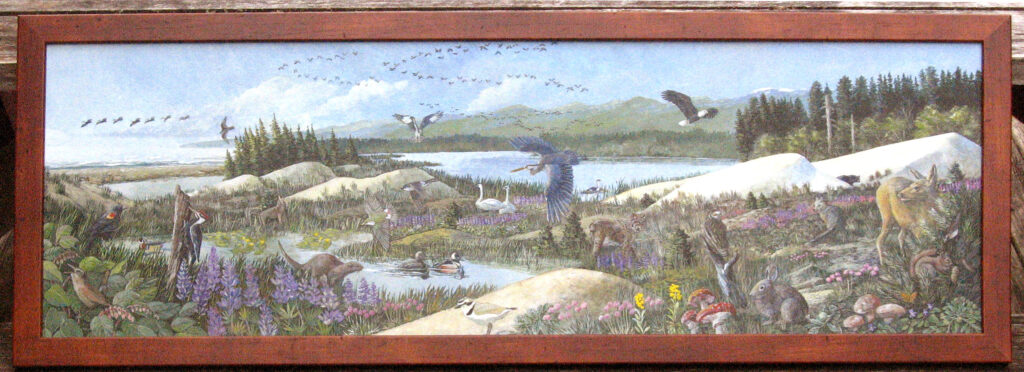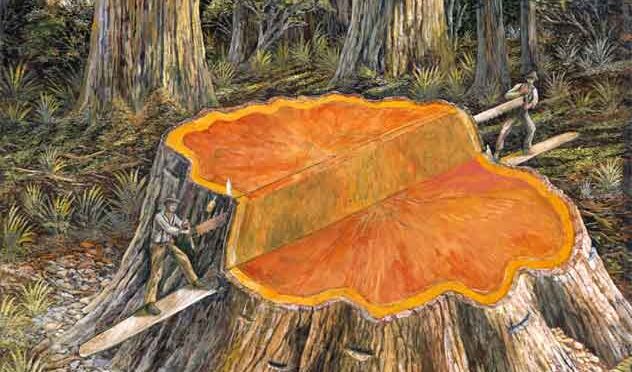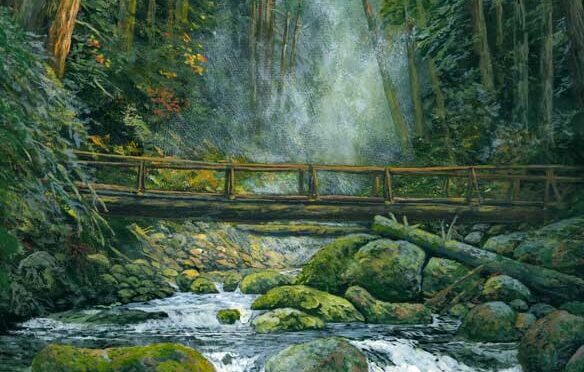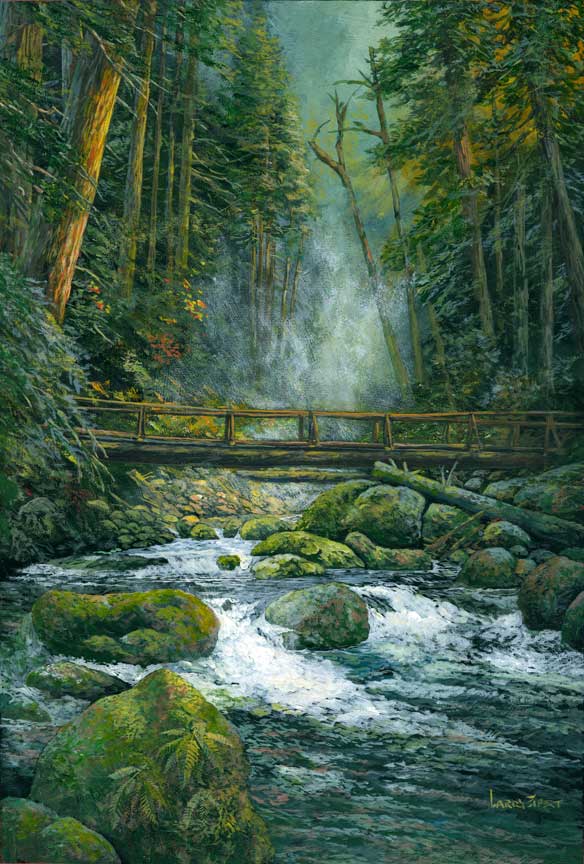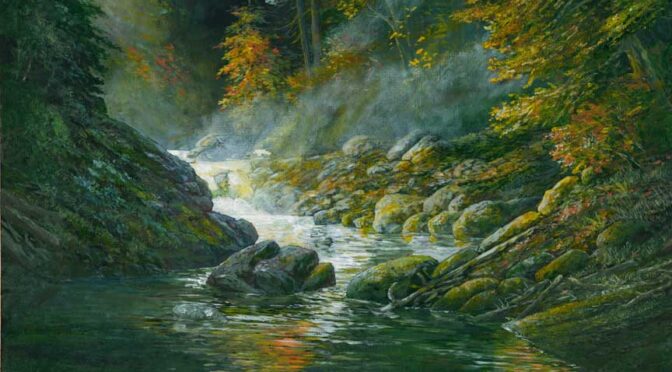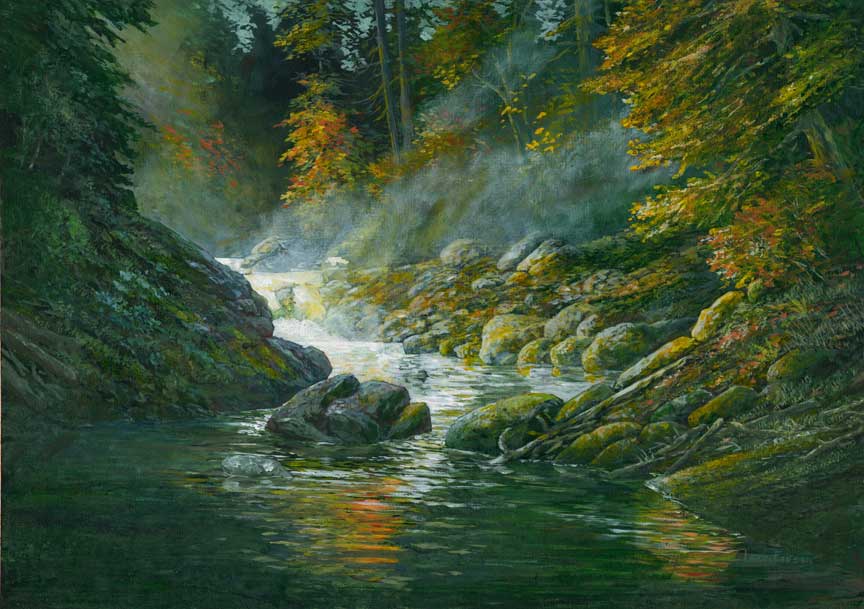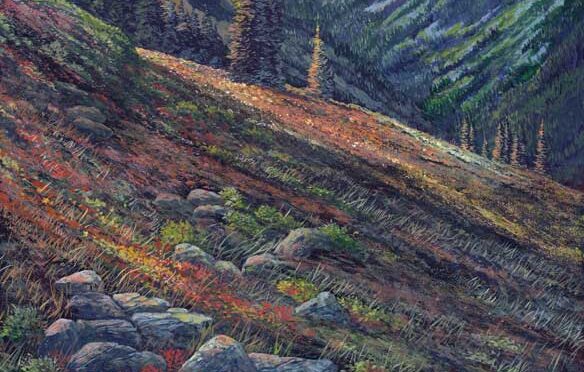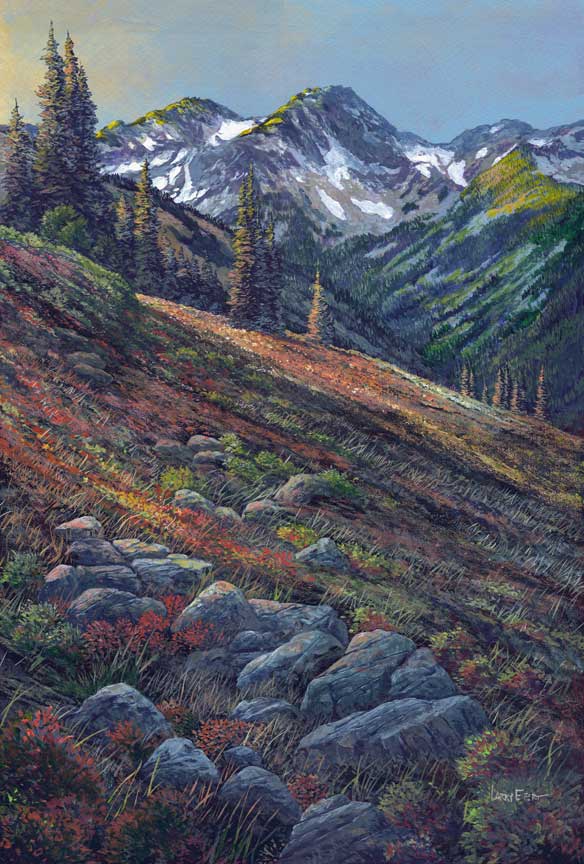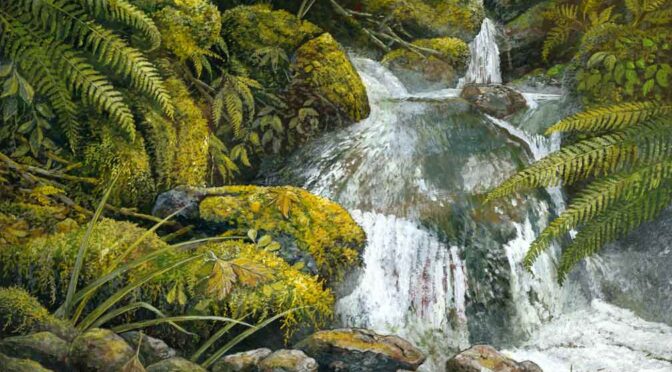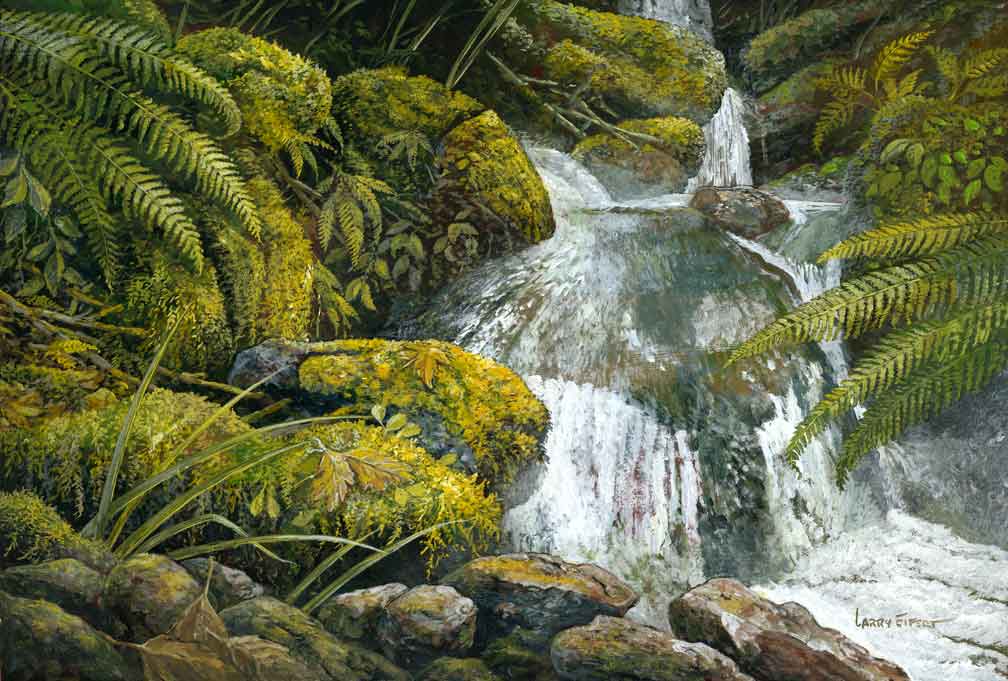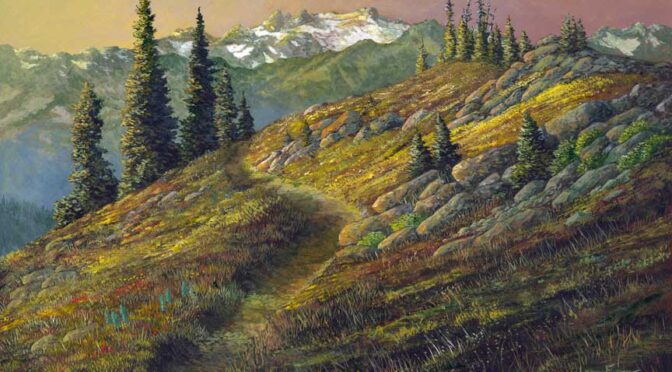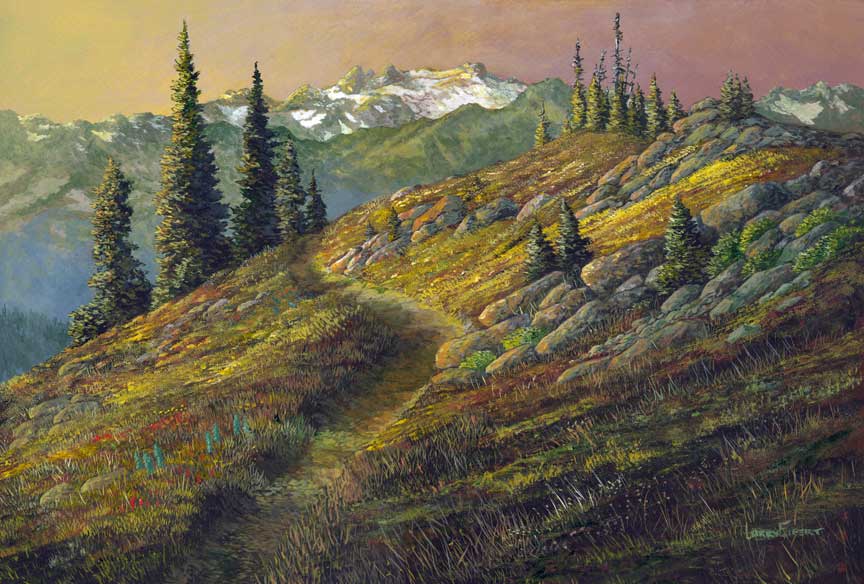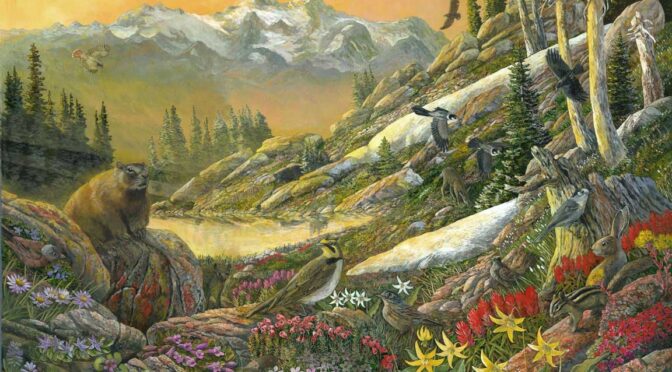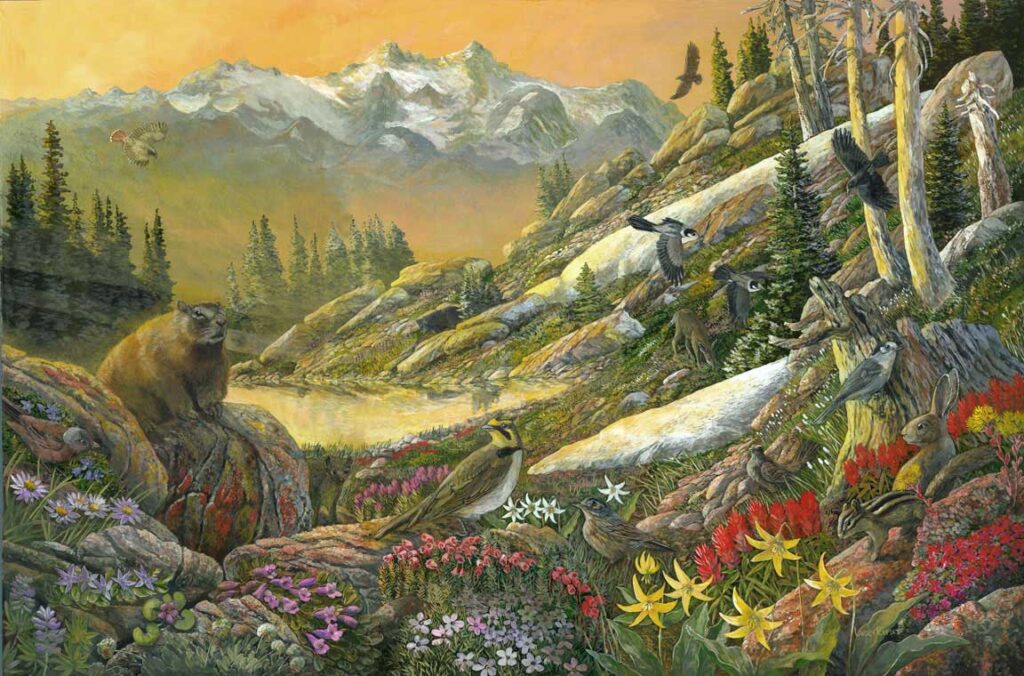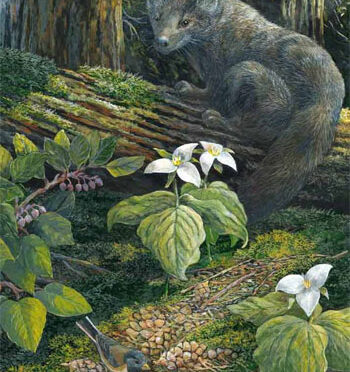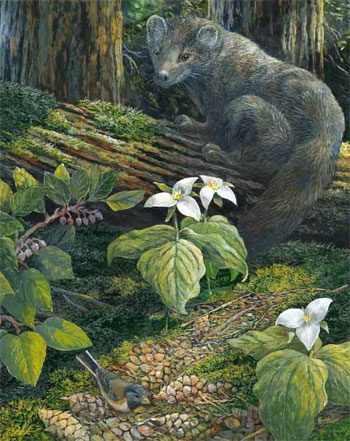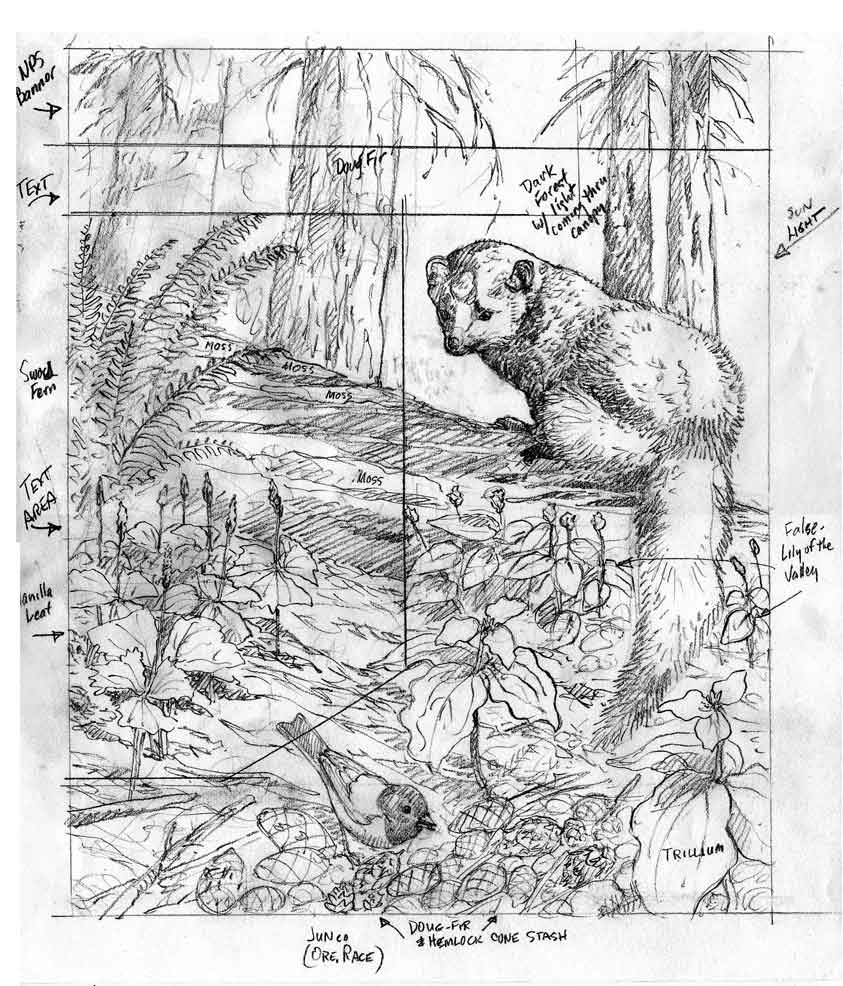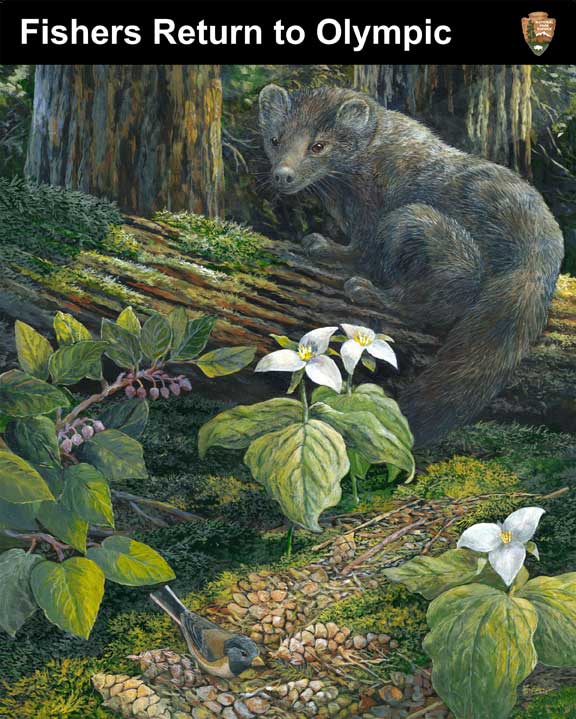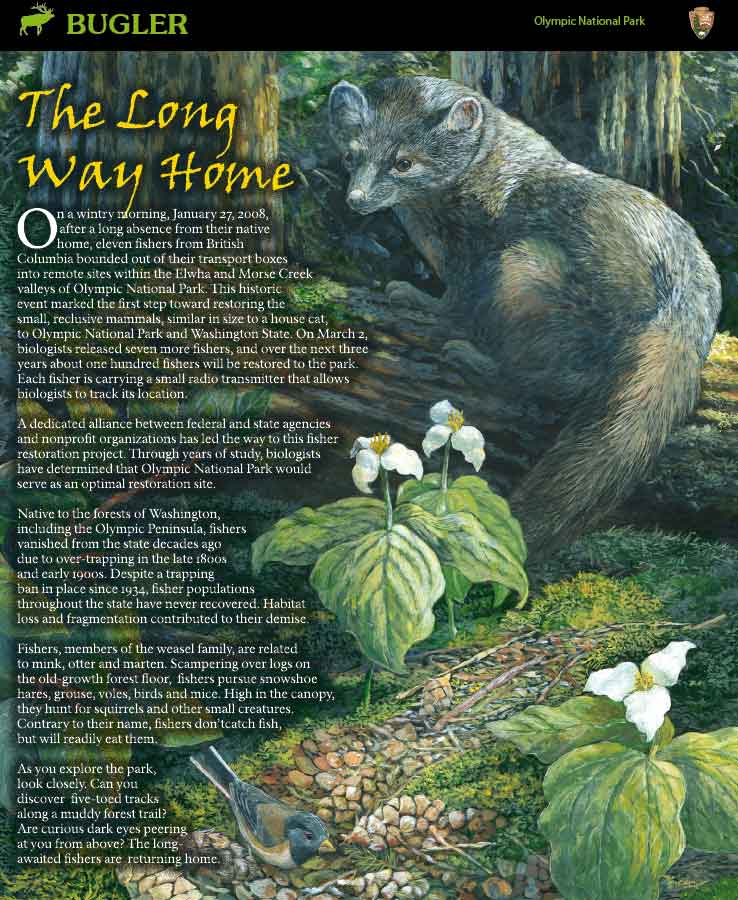Tolowa Dunes Stewards funded this painting for interpretive and educational efforts. Tolowa Dunes State Park is a 5,000-acre California State Park located on California’s far North Coast near Crescent City. Lake Earl and Lake Tolowa are there, as well as a significant portion of the relatively large coastal plain around it. As one local scientist said: “The Lake Earl sand dunes and wetlands represent one of the richest hotspots for bio-diversity of both plants and animals found along the West Coast of the United States.”

I’ve spent many years living just south of this area and know it well – so this was a fun project. Just to the north on the Smith River, I painted my very first large-scale interpretive mural back in the 1980’s for Redwood National Park. That original is still at the Crescent City Visitor Center, and the exhibit still at Hiouchi Visitor Center up on the river. It’ll probably outlive me!
So here’s the sketch.
It was a speedy one, even for me. Because of a funding deadline, the painting was finished in less than a week – but then you guys probably knew that. It’s painted with acrylic on paper board and is about 40″ wide.
Click here to see lots of other national and state park interpetive art on our website.
Some of you have asked where the full website is with all the puzzles, posters and park exhibit stuff. Just click here.
Or, send us an email to opt in or out of our email family – or just ‘talk’ with us.
Thanks for reading.
Larry
